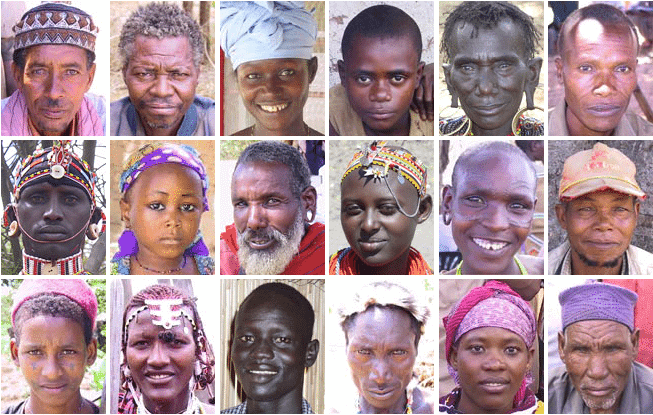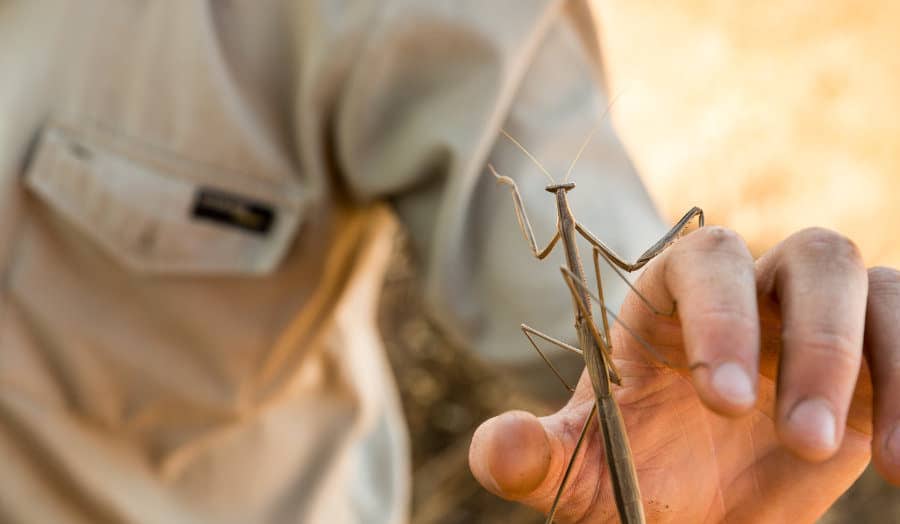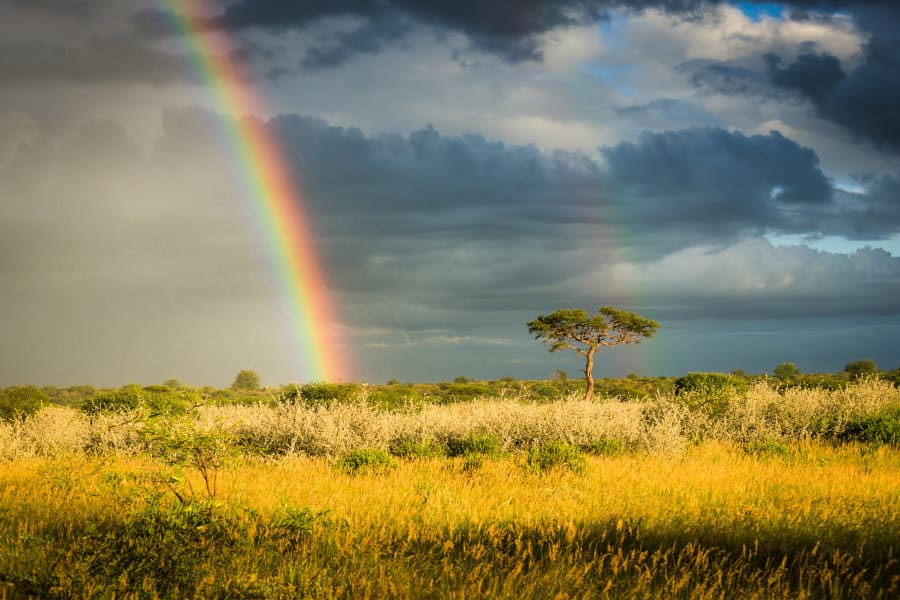Human genetics in Africa is mind-bogglingly diverse. So much so that, if you were to study the two Africans most genetically different to each other, they would share less DNA than a Frenchman does with a Thai person, or a Sri Lankan with a Chinese person.
In other words, the genetic difference between an Englishman and a Japanese man would be smaller than the difference between the two Africans.
Which jars rather against typical anthropological perceptions of the continent’s homo sapiens; many find it useful to lump together the myriad African peoples into one single ‘black African’ group, for example.
The fallacy in this logic, along with several other illuminations, was unravelled in a special AMA set up by The New Reddit Journal of Science this week.
In a wide-ranging question and answer session, professor of genetics and biology at the University of Pennsylvania Sarah Tishkoff responded to queries on human evolution and hereditary disease, as well as the intricacies of genetic variation.
We’ve featured the most interesting Africa-related conversations below.
R: I often read about how Africans, and especially Khoi-San people, have much greater genetic diversity than non-Africans.
Are there any tangible examples of this, e.g. traits where Africans have several different phenotypes while Europeans or Asians would only have one or two? Or is the diversity all at the sequence level.
ST: You are correct that Africans have the greatest levels of genetic variation compared to non-Africans. This is true if one were to pool populations by continent and is also true for nearly all African populations if studied individually.
There are also high levels of genetic differentiation among African populations. This is a result of their demographic history.
Modern humans originated in Africa around 200 thousand years ago and a small subset of people left Africa in the last 50,000 – 100,000 years, resulting in what we call a population “bottleneck”. A lot of genetic diversity was lost during this event.
Africans have also maintained a larger long term population size compared to non-Africans. They are also sub-structured—populations have been separating and diverging for long periods of time. Then in some cases people migrate, admix, and diverge again.
There is also a lot of variation in climate, infectious disease exposure, and diet in Africa, resulting in adaptation to local environments. It is for this reason that you see a lot of phenotypic variation in Africa.
In regards to whether or not Africans have more phenotypic variation amongst populations compared to, say, Europeans or Asians, this is still an outstanding question that would need to be quantified. It also will depend on how you define a “phenotype”.
But a couple of examples that come to mind are height and skin color. Africans have some of the largest variation in height ranging from short statured central African hunter-gatherers (often referred to as “Pygmies”) who are typically under five feet tall to the tall and thin East African and Central African pastoralists who are tall and thin (typically over 6 feet tall in some groups).
There is also a lot of variation in skin color just within the continent which many people aren’t aware of.
For example, the Khoisan, who have the oldest genetic lineages are the lightest skinned people in Africa and the pastoralists who originate in southern Sudan are the darkest skinned people in Africa. So, there is a very large range compared to indigenous populations from Europe, for example.
But note that due to adaptation, there are also very dark skinned people in India, Papua New Guinea, Australia and elsewhere and there are populations with very short people among certain groups in the Philippines, New Guinea, and South America, possibly due to adaptation to a tropical environment.
R: I hail from Rwanda but appear more North Eastern African. Could you tell us why people in the Rift Valley of the horn of Africa appear different, from say, the central or western and southern parts of Africa?
Were there mass migrations fro-and-to middle east and back to Africa that may have led to people from horn of Africa having caucasoid features? Do you know of any studies on this?
ST: My research career started when I was studying populations from Tanzania and I have continued to focus on studying the population history of people from the Rift Valley and their relatedness to other populations. There are some populations thought to be indigenous to that region for tens of thousands of years.
These include the Hadza and the Sandawe, traditionally hunter-gatherers who speak with clicks, a language classified as “Khoisan”.
In fact, there has been a lot of interest and debate about whether or not this language is related to the click languages spoken by the San in southern Africa.
Many linguists would say that the Sandawe language is related but the Hadza language is very divergent. In any case, one hypothesis is that the original inhabitants of that region were click speaking hunter-gatherers who separated from each other tens of thousands of years ago (and some would argue that the San in southern Africa originated in East Africa).
Today, the Rift Valley has populations that originate from many regions. The pastoralist populations that speak languages classified as Nilo-Saharan (like the Maasai) originated from southern Sudan and then migrated first into Kenya (and other surrounding countries) and then into Tanzania within the past few thousand years.
People who speak Cushitic languages and are agro-pastoralists (and who have some of the Eurasian features that you mention) migrated into the region from Ethiopia within the past 5,000 years. The populations in Ethiopia are themselves admixed with non-Africans.
Then there are people who are agriculturalists and speak Bantu languages. Their ancestors originated from Central/Western Africa and came into the Rift Valley within the past few thousand years as part of the “Bantu migration” originating from Nigeria/Cameroon.
There have also been more recent migrations of people from the Arabian peninsula along the coast of Kenya and Tanzania (i.e the Swahili people), and of course even more recent admixture with people from many regions of the world, particularly in populations living on the coastal regions and/or in urban regions.
R: Can you say something about sickle cell anemia and if certain peoples aren’t affected by it?
ST: Regarding sickle cell anemia, the answer is yes, there are many populations not affected by this.
This is because sickle cell anemia is thought to be at high frequency because people who have one normal copy and one copy of the sickle cell mutation are protected from malaria, a disease which causes very high mortality in Africa, particularly amongst children.
So, we see the highest prevalence of sickle cell anemia in West Africa where malaria is most endemic and where this mutation may have arisen.
However, because of a large migration of people who speak the Bantu languages who originated from Nigeria/Cameroon and spread across sub-Saharan Africa within the past few thousand years, this mutation has been introduced to other regions of Africa.
There is a nice map of the distribution of the sickle cell mutation in this paper.
R: Where do you see human evolution going? Doing a historical analysis on where we came from, do you have any hypotheses on what we might look like in a few thousand years?
ST: Wow, this is an interesting question to ponder! I don’t think we’re going to “look” very different as a species other than that we will continue to be more admixed (and this can only be a good thing from a genetic perspective since it introduces more genetic diversity!).
However, one thing to remember is that infectious disease is one of the major continuing sources of selection which could potentially wipe out huge numbers of individuals unless they have innate resistance. We’ve recently seen this happen with the Ebola outbreak.
For reasons we don’t entirely understand, as many as half the people infected in Africa did not die from the disease but others did.
Also, it’s taking a long time to come up with a vaccine.
So, I definitely think we will see ongoing evolution in regard to immune related genes.




I get angry when I see these lies about African populations, especially Ethiopians and Somalis, racist theories and full pseudo-science. There is no such thing as Eurasian characteristics, first evidence anthropologists everywhere in the world of ancient human remains are always Negroides, and of course there are modern populations with these same characteristics outside Africa, second, the people of central Africa as Tutsi have the characteristics “caucasoides “and even so it remains 100% African, narrow nose and thin lips are African adaptations.
Hello, who is responsible for the matter of the site?